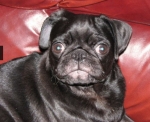FIrst, happy Christmas to anybody who's reading this on Christmas morning
As some of you may know, I've been recommended CPAP by a cardiologist because of frequent PVCs (palpitations) that started about six months ago. I've had two sleep studies with conflicting results, and it's not clear whether I have sleep apnoea or not. I don't have any other symptoms except the PVCs, and after six months of extensive tests, I've been told that I'm in perfect health. However, I have unexplained low oxygen saturation, not only whilst I'm asleep, but particularly when I am. And the PVCs, of course.
Anyway, I finally manged to get through a whole night with the mask on, and I'm posting the first data from OSCAR that I think is trustworthy.
Although I have medical background (decades ago), I have no expertise in sleep disorders at all. I have only the vaguest idea what these graphs show.
However, I note that the pressure was always above the minimum of 5cm set on the machine, and peaked at about 12cm. I don't think the machine increased the pressure to compensate for leakage, so I guess there must be some other reason for it to increase the pressure.
Although I couldn't fit it in the screenshot, the pressure peaks are all accompanied by huge increases in respiration rate -- as high as 30/min in places. My respiration rate doesn't increase that much even when I'm running, so I don't know if that's normal during sleep.
So -- does this look like a typical picture of sleep apnoea? When the report says AHI=0.66, does that mean it was that low with the help of the machine, or what it would have been without the machine?
Thanks for any suggestions.
Best wishes
Lars








